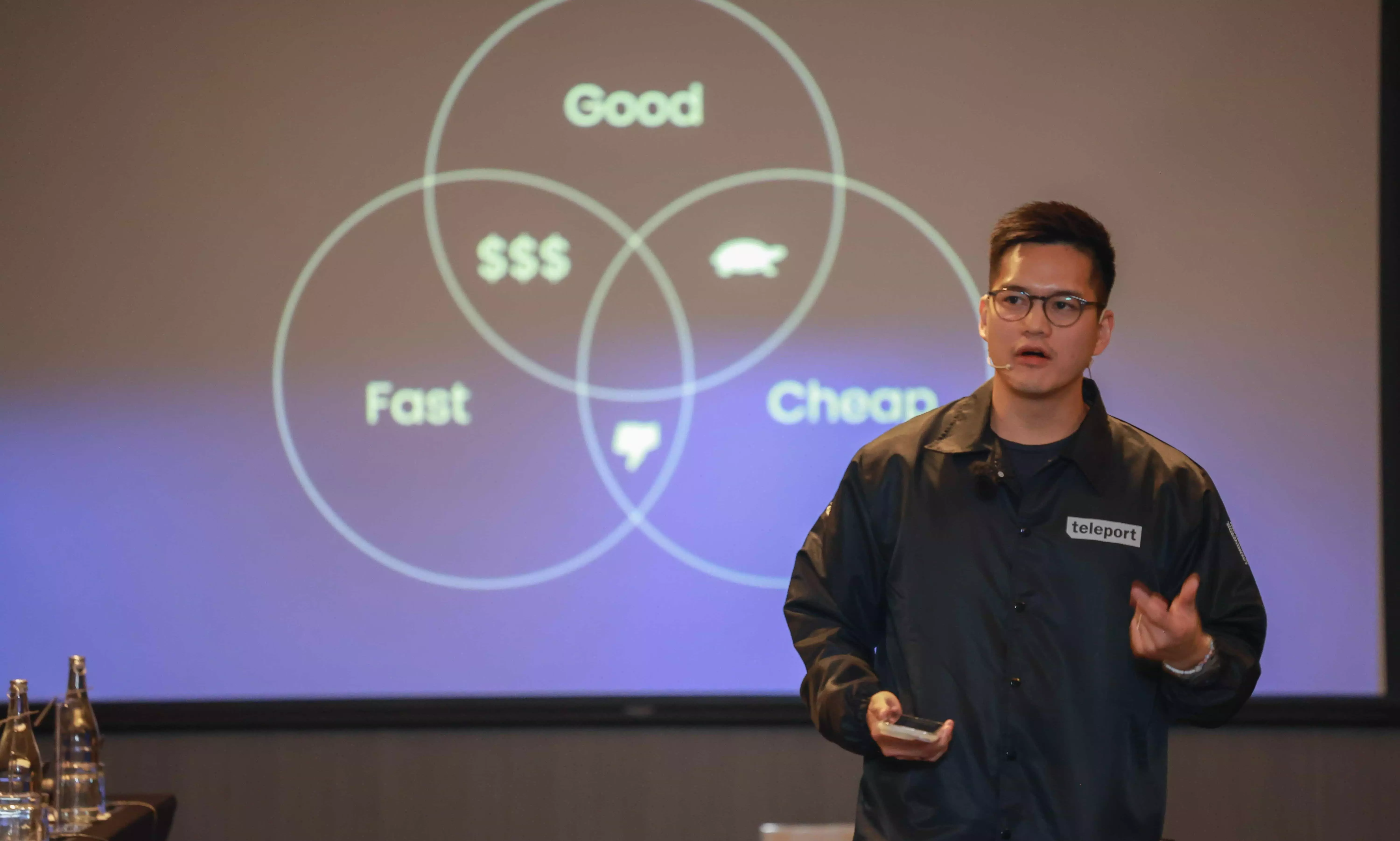
Teleport to deliver 2 million parcels daily by 2025, says company CEO
The Malaysia-based integrated logistics provider plans to add seven more freighters to its fleet by 2025.

Pete Chareonwongsak, CEO, Teleport
"People hate slow and expensive delivery services," said Pete Chareonwongsak, CEO of Teleport, during his presentation at Teleport's media briefing hosted at W Kuala Lumpur, Malaysia, on May 13, 2024. With more people having smartphones and internet access now than ever, people want everything instantly, whether pasta from their favourite restaurant in town or apparel from Chinese fast-fashionbrands.
China currently exports more to Southeast Asia than to the United States. The export value of parcels from China to Southeast Asia is $523.7 billion. The total addressable market in Southeast Asia for only e-commerce by air is $3.1 billion. There is a high demand for both fast and cheap cross-border delivery. However, the industry still has an opportunity for players who can deliver fast, affordable, yet reliably.
While sharing the company's journey, the CEO mentioned that to address that gap and offer same-day delivery across Southeast Asia at a low price, it has integrated Air Asia's total belly space under the network, including three narrow-body Airbus A321F freighter aircraft into its fleet and partnered with over 30 airlines including Emirates, Vietjetair Cargo and UPS.
"Controlling the right hybrid belly network, enabled by the right use of technology and the right operating model, provides our customers and partners with a next-day service in Southeast Asia that everyone can afford for the first time," said Chareonwongsak.
Teleport Team at the conference: (L-R) Milan Dhingra (CPO), Pete Chareonwongsak (CEO), Jan Philipp Pöter (CBO), Maybel Chan (Head of Marketing), Craig Matthews (CFO).
Teleport, established in 2018, presented its growth strategy during the media briefing. The plan includes three key components:
1. A hybrid network: Teleport aims to strengthen its infrastructure by expanding its first-to-last-mile next-day delivery infrastructure and collaborating with more air partners to expand capacity on high-volume routes. Teleport already has a strong presence in Southeast Asia, with a multi-hub hybrid mid-mile belly network of freighters and passenger belly space that combines more than 30 partner airlines.
2. Reliability powered by technology: To ensure reliable, affordable next-day delivery, Teleport plans to leverage technology to enable seamless orchestration from the first to the last mile. This involves providing complete visibility to ensure that it works for all and incorporating intelligence for automated yet flexible planning, prediction, and service recovery.
3. A cost-leading, sustainable operating model: Teleport's asset-light, pay-per-use model enables it to operate with a lower cost structure. This results in affordable pricing for customers and growing network access. When third-party airlines partner with Teleport, they benefit from incremental revenue gained through new and growing volume channelled through their belly capacity.
"We are ten times cheaper than our competitors. We automate planning with the help of technology so that it (the delivery chain) works," added Chareonwongsak.
But, with such super-fast delivery, there could be a potential chance of high carbon emissions. To address that point and share Teleport's sustainability initiatives, the CEO informed The STAT Trade Times during the Q&A session that only 28% of the total air cargo space, including the belly of passenger flights, is currently being used.
"72% of it (space) has yet to be used. Those carbon emissions are left behind for 72% of the space that is never used. So, what's critical for us is not to continue adding more infrastructure. We are not trying to be another airline. We are trying to figure out how to utilise all that empty space better than anybody else. Part of that is to bridge the network together," he added.
According to the Teleport CEO, the secret to reducing carbon emissions is not relying entirely on freighters to deliver most of this model; instead, it is using the already available space. "So that when they are flying and leaving behind carbon emissions anyway, we are better to tap on that and use that space. We can make that happen, but we need to gain the trust of more airline partners, especially airlines outside our partnered groups. We need to create a consolidated network of airlines," added Chareonwongsak.
Routes, both in the air and on the ground, can be properly optimised to further improve sustainability efforts and overall operational efficiency. However, this industry is still unorganised, and digitisation is the key to route optimising, which is a long way to go for the air cargo industry, as stated by the CEO of Teleport.
"Southeast Asia is still very fragmented, like many different countries, yet very close to China where many e-commerce companies originated, added Jan Philipp Pöter, Chief Business Officer, Teleport, during an exclusive interview with The STAT Trade Times after the conference.
While discussing Teleport's plans beyond Southeast Asia, Pöter said, "Southeast Asia is home. This is where we started. But Teleport is beyond that (Southeast Asia). The next step beyond Southeast Asia is Asia overall. We are already there. We have a strong presence in India, China, Japan, and Korea. We also have partnerships with Middle Eastern airlines."
“The technology we built aims to have one integrated layer that offers first-mile to last-mile delivery. It enables us to gain visibility in real-update load and dynamic load planning, offer customer visibility, and know whether a parcel is safe to fly, especially in terms of dangerous goods,” mentioned Pöter.
With connectivity to over 85 Southeast Asian cities, the Malaysia-based integrated logistics provider currently offers 80% coverage across the region and extending 164 hubs across the Asia Pacific region. It provides customisable, multi-modal first-to-last mile network infrastructure and serves over 1,500 businesses ranging from e-commerce marketplaces to forwarders of all sizes.

